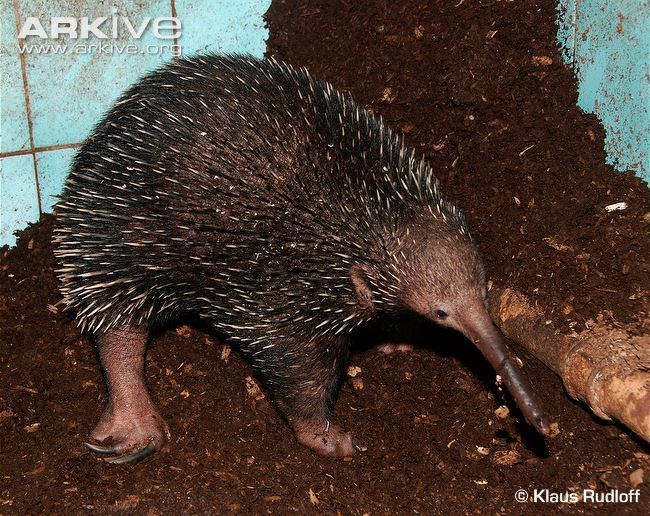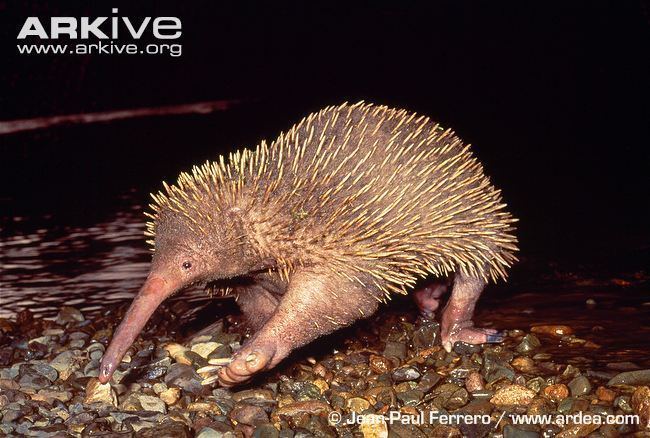Order Monotremata Scientific name Zaglossus Rank Genus | Phylum Chordata Family Tachyglossidae Higher classification Echidna | |
 | ||
Lower classifications Western long‑beaked echidna, Eastern long‑beaked echidna, Sir David's long‑beaked echidna | ||
The long-beaked echidnas (genus Zaglossus) make up one of the two extant genera of echidnas, spiny monotremes that live in New Guinea. There are three living species and two extinct species in this genus. The extinct species were present in Australia. Echidnas are one of the two types of mammals that lay eggs, the other being the platypus. The echidnas retain reptilian features such as egg-laying but display mammalian features such as fur and lactation.
Contents
- Long beaked echidna at taronga
- Zaglossus attenboroughi
- Zaglossus bartoni
- Zaglossus bruijni
- Zaglossus hacketti
- Zaglossus robustus
- General information
- References

All three long-beaked echidna species are listed as Critically Endangered by the IUCN.
Long beaked echidna at taronga
Zaglossus attenboroughi
Zaglossus bartoni

Zaglossus bruijni
†Zaglossus hacketti

†Zaglossus robustus

General information
The long-beaked echidna is larger than the short-beaked and has fewer, shorter spines scattered among its coarse hairs. The snout is two-thirds of the head length and curves slightly downward. There are five digits on both hind and forefeet, but on the former, only the three middle toes are equipped with claws. Males have a spur on each of the hind legs. This echidna is primarily a nocturnal animal that forages for its insect food on the forest floor. The animals are not usually foraging in the daylight. The long-beaked echidna lives in dens and they are commonly found to be in underground burrows. The breeding female has a temporary abdominal brood patch, in which her egg is incubated and in which the newborn young remains in safety, feeding and developing. Since they reproduce by laying eggs and are incubated outside of the mother’s body it is accompanied by the prototherian lactation process show that they are early mammals. The long-beaked echidna has a short weaning period. During this time milk is their only source of nutrition and protection for the hatchlings; they are altricial and immunologically naive. Little is known about the life of this rarely seen animal, but it is believed to have habits similar to those of the short-beaked echidna; unlike them, however, the long-beaked echidnas feed primarily on earthworms rather than ants. The population of echidnas in New Guinea is declining because of forest clearing and overhunting, and the animal is much in need of protection.
